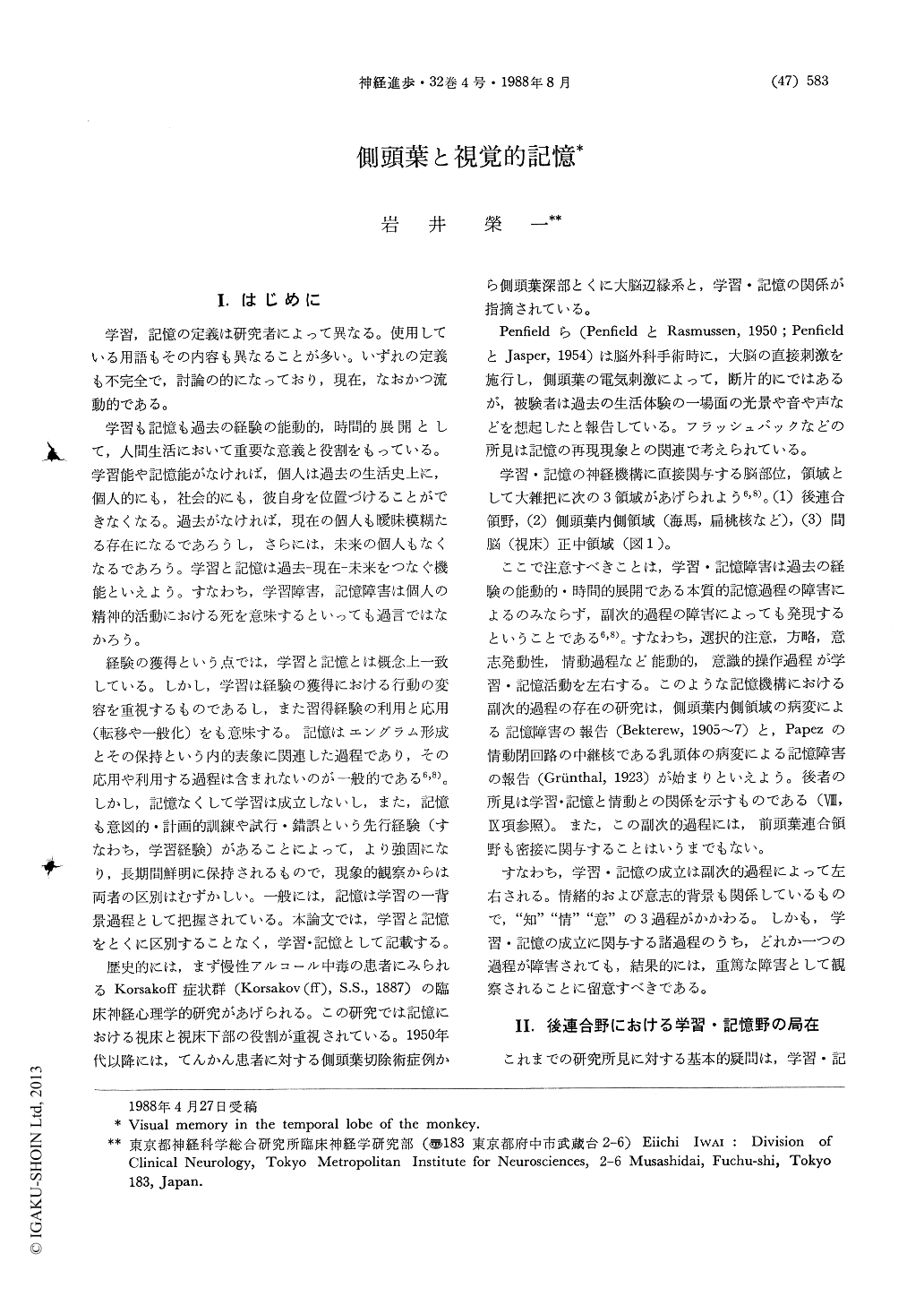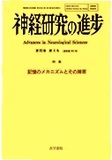Japanese
English
- 有料閲覧
- Abstract 文献概要
- 1ページ目 Look Inside
I.はじめに
学習,記憶の定義は研究者によって異なる。使用している用語もその内容も異なることが多い。いずれの定義も不完全で,討論の的になっており,現在,なおかつ流動的である。
学習も記憶も過去の経験の能動的,時間的展開として,人間生活において重要な意義と役割をもっている。学習能や記憶能がなければ,個人は過去の生活史上に,個人的にも,社会的にも,彼自身を位置づけることができなくなる。過去がなければ,現在の個人も曖昧模糊たる存在になるであろうし,さらには,未来の個人もなくなるであろう。学習と記憶は過去—現在—未来をつなぐ機能といえよう。すなわち,学習障害,記憶障害は個人の精神的活動における死を意味するといっても過言ではなかろう。
The present article reviewed the mechanism ofvisual learning and memory in the inferotemporal cortex of the monkey in relation to our recent findings. Our findings were as follows: (1) Learning curve on pattern discrimination task consisted of two separable stages ; the first stage was the period of a chance level performance, and the second stage was the period of improving discrimination. The former stage reflected the process of attending to the discriminative cues, whereas the latter stage, the processes of perception and cognition, including memory for the discriminative cues. (2) Monkeys with ablations of inferotemporal cortex showed marked prolongation of the second stage. The findings indicated that the inferotemporal cortex was concerned more closely with the processes of visual perception and cognition than with that of selective attention. (3) In learning on a number of objects, serial object discrimination tasks were learned mainly using working memory, whereas concurrent object discrimination tasks were achieved after consolidating memory for all the objects. (4) Monkeys with ablations of inferotemporal area TE showed marked impairment even in the concurrent object tasks which had been overtrained preoperatively, whereas they could relatively easily relearn the serial object tasks. On the other hand, monkeys with removal of area TEO did not show deficits in serial and concurrent object discrimination tasks. (5) There were a small population of inferotemporal neurons responding to a specific visual stimulus and not to the others. Such cells in area TE appeared to reflect a categorization or memory process for the stimuli, and those in area TEO, a perception process for the stimulus. (6) The above findings indicate that area TE in the inferotemporal cortex is closely involved in the mechanism of visual cognition and memory storage, whereas area TEO, in the mechanism of perception. (7) In addition, it was found that the dorsal TE (field TEd) located in the middle temporal gyrus had strong interaction with the amygdalar nuclei, whereas the ventral TE (field TEv) located in the inferior temporal gyrus, with the hippocampal fields in the hippocampal formation and parahippocampal cortex. Furthermore, the anterior portions of both the TEd and TEv fields (fields TEad and TEav) had more strong interactions with the limbic nuclei than the posterior portions (fields TEpd and TEpv). (8) The findings suggest that area TE consists of four subdivisions of fields TEad, TEpd, TEav and TEpv, and these fields are involved differently in visual learning and memory.

Copyright © 1988, Igaku-Shoin Ltd. All rights reserved.


